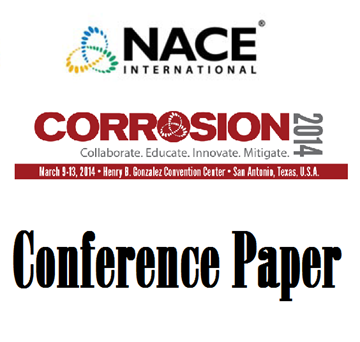Search
Products tagged with 'pipeline'
View as
Sort by
Display
per page
(Pipeline, Oil & Gas) Advantages of a True 100% Epoxy, Pipeline Coating in Cold Weather vs. The Comm
Product Number:
22-COAT_DEC21
Publication Date:
2021
$20.00
03077 A Modified Potential Attenuation Equation for Cathodically Polarized Marine Pipelines and Risers
Product Number:
51300-03077-SG
ISBN:
03077 2003 CP
Publication Date:
2003
$20.00
10114 Manage Pipeline Integrity by Predicting and Mitigating HVAC Interference
Product Number:
51300-10114-SG
ISBN:
10114 2010 CP
Publication Date:
2010
$20.00
10368 A Systematic Approach Toward Selection of Cost-Effective and Corrosion Resistant Materials and Corrosion Inhibition and Protection Methods by Using Corrosion Prediction Models
Product Number:
51300-10368-SG
ISBN:
10368 2010 CP
Publication Date:
2010
$20.00
51314-3723-Pipeline Corrosion Management; a Compendium
Product Number:
51314-3723-SG
ISBN:
3723 2014 CP
Publication Date:
2014
$0.00
51316-7152-Self-healing protection of pipeline corrosion by epoxy coating with preloaded inhibitors
Product Number:
51316-7152-SG
ISBN:
7152 2016 CP
Publication Date:
2016
$20.00
51316-7173-Development of Carbon Steel for Pipe Resistant to Stress Corrosion Cracking in Fuel Grade Ethanol
Product Number:
51316-7173-SG
ISBN:
7173 2016 CP
Publication Date:
2016
$20.00
51317-9520-Pipeline Casings – Management of Pipeline Casing Issues
Product Number:
51317-9520-SG
ISBN:
9250 2017 CP
Publication Date:
2017
$20.00
51318-10844-Laboratory and Field Investigation of the Effect of the Chemical Environment on AC Corrosion
Product Number:
51318-10844-SG
Publication Date:
2018
$20.00
51318-10944-Cathodic protection affected by stray current transients: Critical duration and amplitude
Product Number:
51318-10944-SG
Publication Date:
2018
$20.00
51318-11004-Frequency dependence in AC Harmonic Interference to Pipelines
Product Number:
51318-11004-SG
Publication Date:
2018
$20.00
51318-11007-Data Integration Techniques to Support Meaningful Visualization of Corrosion Data
Product Number:
51318-11007-SG
Publication Date:
2018
$20.00












